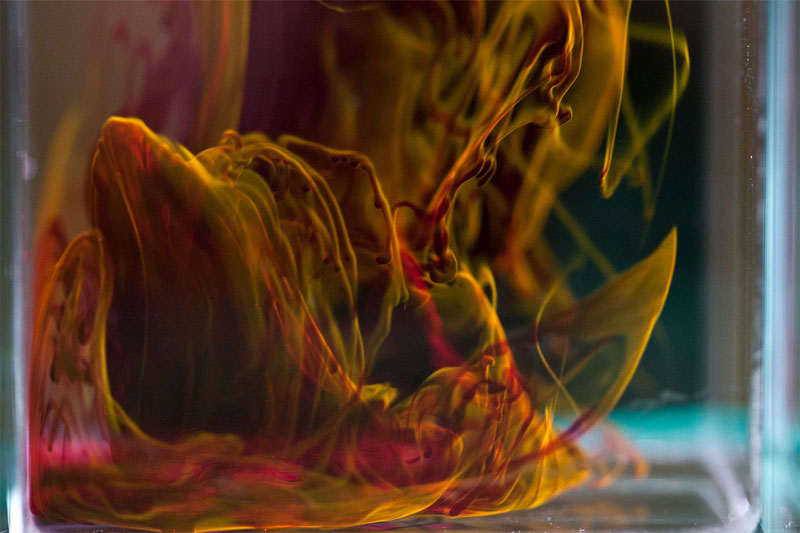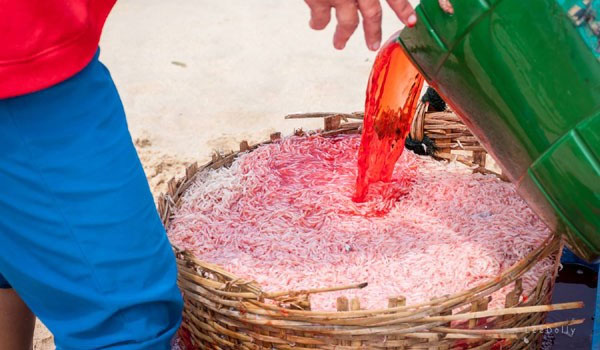How red, chilli, melon seeds dyed red with dangerous clothes dye
People who eat right after being stained with Rhodamine may have difficulty breathing, burning in the chest, headache, urine turning fluorescent red, this substance accumulates for a long time, leading to cancer.
Rhodamine is a toxic chemical commonly used in textile dyeing technology, most notably Rhodamine 6G and Rhodamine B. This substance is used as a means of collecting dye laser. Rhodamine dyes emit fluorescence, which can be easily detected by thin layer chromatography. Currently, Rhodamine is widely used in biotechnology for fluorescence microscopy, cell flow measurement, fluorescence correlation spectroscopy and ELISA.

Rhodamine dyes are extremely toxic, and can be dissolved in water, methanol and ethanol.
Experts recommend this drug to be extremely toxic , soluble in water, methanol and ethanol, thus banned from use in food production. However, some families and producers have abused Rhodamine B to beautify food because of its convenience and simplicity. Meanwhile, consumers who are psychologically interested in beautiful fresh color products are easily "poisoned" by these contaminated chemicals.
Recently, some households in Phu Yen have used Rhodamine to dye the straw to help the product have a beautiful red lotus color and do not know how it is harmful. In March, some tourists discovered that Ganh Red fishermen stained the beach baskets so they took photos posted on Facebook, causing frustration in the online community.
The interdisciplinary inspection team then entered, reviewed business establishments, produced scallops in the area and took samples for testing. The Phu Yen Sub-Department of Agro-Forestry-Fisheries Quality Control said the results of testing 3 chemical samples used to dye the straw discovered a type not used in food processing is red lotus Rhodamine B. However, due to the failure to catch berries, there is not enough legal basis, the authorities cannot proceed with the sanctions.

A Phu Yen resident is dyeing with Rhodamine.(Photo: PH).
Some production facilities also use Rhodamine B to dye peppers . At the end of last year, an unexpected examination was conducted by the Ministry of Health in collaboration with the Ministry of Public Security Police Department C49 at Mr. Pham Van Tuyen and Mrs. Hoang Thi Tinh in Hai Duong Province discovered 6 bags of Rhodamine-contaminated paprika. B.
The dye is also used to beautify melon seeds. People diluted Rhodamine B in a large container and poured melon seeds, mixed them, dried them, bagged them and sold them to the market. Experts recommend that it is very dangerous to just bite the melon seeds or contact the melon peel. This substance accumulates for a long time in the body, causing damage to the liver and kidneys, gradually leading to cell mutations and cancer. People with liver failure with poor liver excretion can cause immediate allergies with manifestations of skin rash and congestion. People with good health who use this kind of melon for a long time are prone to serious diseases such as liver, kidney and cancer.
Even the use of Rhodamine B dyeing clothes is very limited . If you wear clothes, there is a residue of this medicine that can cause skin damage to the wearer. Therefore, many experts condemn the intentional stain of Rhodamine B into melon seeds or any food is unacceptable.

Rhodamine B has beautiful pink lotus petals.
Doctor Tong Thanh SiKa, Saigon Mind General Hospital, explains Rhodamin B is a chemical compound with molecular structure of C 28 H 31 ClN 2 0 3 . Material Safety Data Sheet (MSDS - Material Safety Data Sheet) indicates some evidence of carcinogenicity of this substance when tested in animals, for people who are exposed or swallowed. Rhodamine may have direct health effects such as:
- Itching, excessive tearing, runny nose, sore throat after exposure to Rhodamine B.
- Cough, shortness of breath or burning sensation in the chest.
- Headache symptoms have been reported in people exposed to Rhodamine B.
- Nausea is a common symptom.
- Ingestion of dyes can cause urine to turn into fluorescent red.This red color is not caused by blood in the urine.
- The skin of the victim exposed to Rhodamine B aerosol may be itchy and irritating.
- Hepatic hypertrophy is reported in animal studies, but has not been confirmed in humans.
- Research shows that Rhodamine B increases thyroid tumors, liver, lymphocyte production, increases intestinal tumors in rats when given this amount in animal drinking water.
How to "reduce" pesticides in vegetables
Simple way to identify Chinese vegetables and fruits
How to buy pork without salbutamol and spinach without water
- How to choose melon seeds is not stained with chemicals
- How to grow pepino wrong fruit in potted plants for every home
- Bitter but healthy foods
- 10 reasons not to miss bitter melon
- How to choose delicious melon without sucking 'chemical'
- How to recognize Chinese gold mesh melon
- Instructions on how to grow bitter melon fruit at home
- Harm of sunflower seeds
- When did people start dressing?
- Unexpected benefits from melon with every home's health
- The chilli is so hot that it only bites 1 shot, this will be your last meal
- Cultivation of melon plants for high productivity
 Soaking vegetables in salt water does not remove chemicals but you should still do it
Soaking vegetables in salt water does not remove chemicals but you should still do it You should limit bamboo shoots if you have 1 in 5 of these diseases
You should limit bamboo shoots if you have 1 in 5 of these diseases Mistakes when soaking vegetables in salt water
Mistakes when soaking vegetables in salt water Risk of death when combining shrimp with vitamin C
Risk of death when combining shrimp with vitamin C